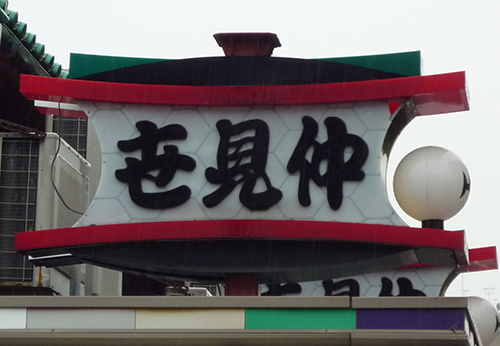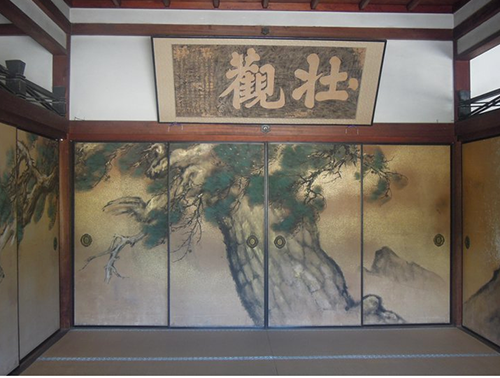147. The "Seeing" Radical: 見
You don't need to keep too close an eye on the "seeing" radical 見 because this seven-stroke shape is quite stable, having no variants. In addition, our radical etymologically means "to see" in all seven Joyo kanji in which it is on duty:
見 (18: to see, look at; opinion; visible)
親 (149: parent; relatives; intimate; friendly)
覚 (439: to perceive; sense; remember; awaken; be detected)
観 (445: view; appearance; outlook)
規 (643: regulation, measure)
視 (878: eyesight; to regard)
覧 (991: to look)
The radical name みる works in every case because the Japanese don't use position names to indicate that the 見 shifts around inside these characters.
In English, the radical names "seeing" and "see" match the primary sense of this kanji:
見 (18: to see, look at; opinion; visible)
Henshall says in his newer edition (the source of all etymological information in this Radical Note) that the 目 in 見 represents an "exaggerated eye" and sits atop a variant form of "person," by which he might mean an altered shape of 人. He adds cryptically that the 儿 in 見 sometimes means just "legs." I think he's asserting that in some ancient shapes of 見, the bottom strokes represent "legs" instead of "person," but I'm not positive.

Photo Credit: Lutlam
In the Asakusa section of Tokyo, 見 occupies the center of this sign, which we must read from right to left as 仲見世 (なかみせ), where 世 appears in a variant form.
Leading to 浅草寺 (せんそうじ), a prominent temple in Asakusa, 仲見世 is the name of a popular, pedestrian-only street there but isn't a proper noun and isn't exclusive to Asakusa. The term refers to shops lining a walkway near a shrine or temple. It's also possible to render なかみせ as 中見世 or 仲店. As the 仲店 version reflects, the -みせ part of なかみせ likely has some relationship to みせ (店: shop), even when rendered as 見世.
Four Etymologies
Of the seven Joyo kanji with 見 as the on-duty radical, most involve vision in some way. Here are four of Henshall's etymologies:
覚 (439: to perceive; sense; remember; awaken; be detected)
The radical means "look/see," though it originally represented "appear before the eyes." The top part phonetically conveys the associated sense "clear, evident." Thus, 覚 came to mean "become clear before the eyes," with extended senses such as "discern, understand."
観 (445: view; appearance; outlook)
The radical means "to see." The left side represents "crested bird" and phonetically conveys "turn, rotate," collectively yielding "look all around."
視 (878: eyesight; to regard)
Originally, just 目 (eye) was on the right side. The left-side phonetic has the associated sense "stop," producing the overall meaning "stop eye movement and watch/keep watching."
覧 (991: to look)
Once more, this 見 means "to see." The top part originally meant "look at water surface in bowl as mirror" and now represents "supervise, watch." Thus, the whole character came to mean "see, look."

Photo Credit: Yoshikazu Kunugi
At the Kyoto temple 仁和寺 (にんなじ), a sign features this word:
壮観 (そうかん: magnificent view)
Again, we need to read this from right to left because it's old. How old? Some sites identify this work as a reproduction of calligraphy by Li Bai (701–762). That would explain why the character shapes differ from Joyo ones; the 壮 features an extra dot off to the side, and the right half resembles 土 (radical 32: "earth") rather than 士 (radical 33: "samurai"). The 観 also appears here in an older form, topped by two + signs.
You can actually find an engraving of Li Bai's calligraphy on a rock at 懸空寺 (Xuankong Si: Hanging Temple) in Shanxi Province in China. As the picture at the first link shows, his version there looks identical to the calligraphic sign in Kyoto (including the extra dot), except that the characters are vertical on the Chinese rock.
Vision Fades
Two final kanji now have no connection to vision in terms of their meanings, but did they ever? Henshall helps us see the matter more clearly:
規 (643: regulation, measure)
The radical again means "to see." The left side phonetically has the associated sense "round," giving "a round measure," which is to say "compass," with "standard" as an extended sense.
親 (149: parent; relatives; intimate; friendly)
To my surprise, the radical does mean "see" here. One etymology expert identifies the left side as "tree selected for religious purposes," then felled and used in a process for revering deceased relatives. This led to the extended sense of 親 as "parents, relatives." Another researcher views the left side as a phonetic with the associated sense "close, near," yielding the overall sense of 親 as "seeing those nearby," which is to say "parents, relatives." So the real difference in these interpretations is whether or not the people are dead!
